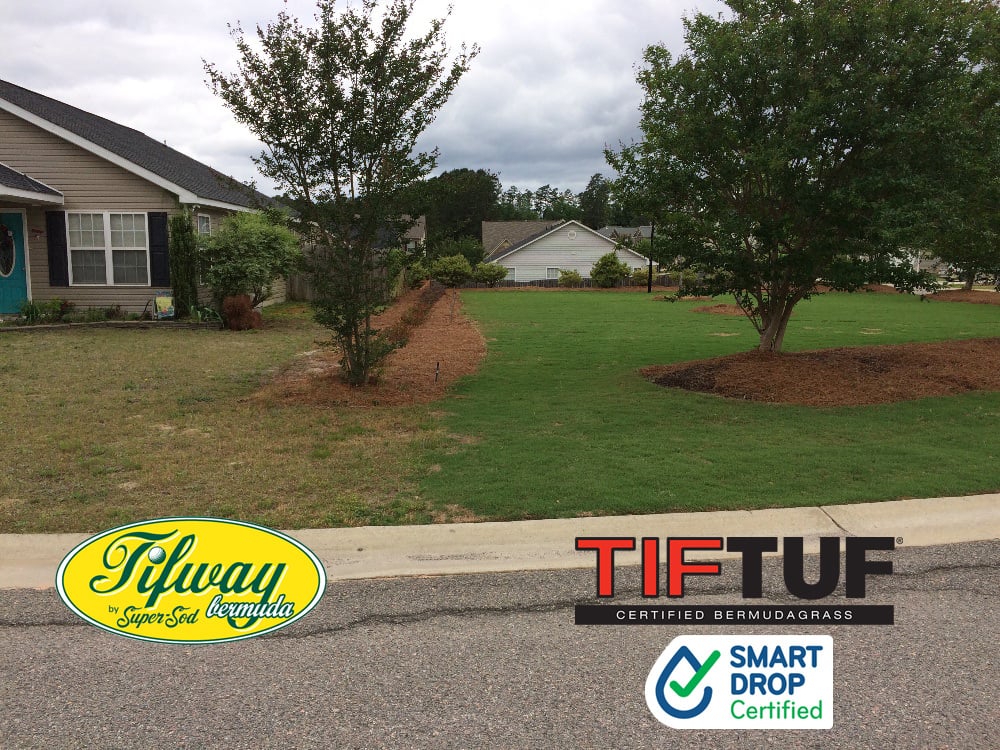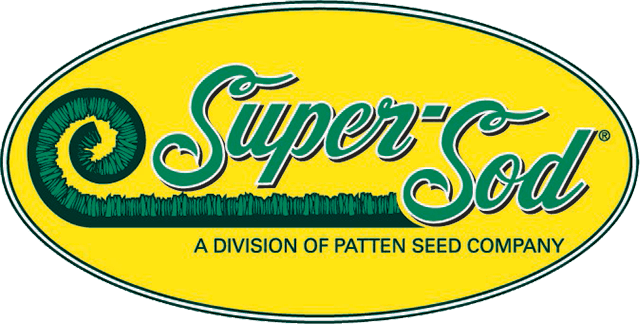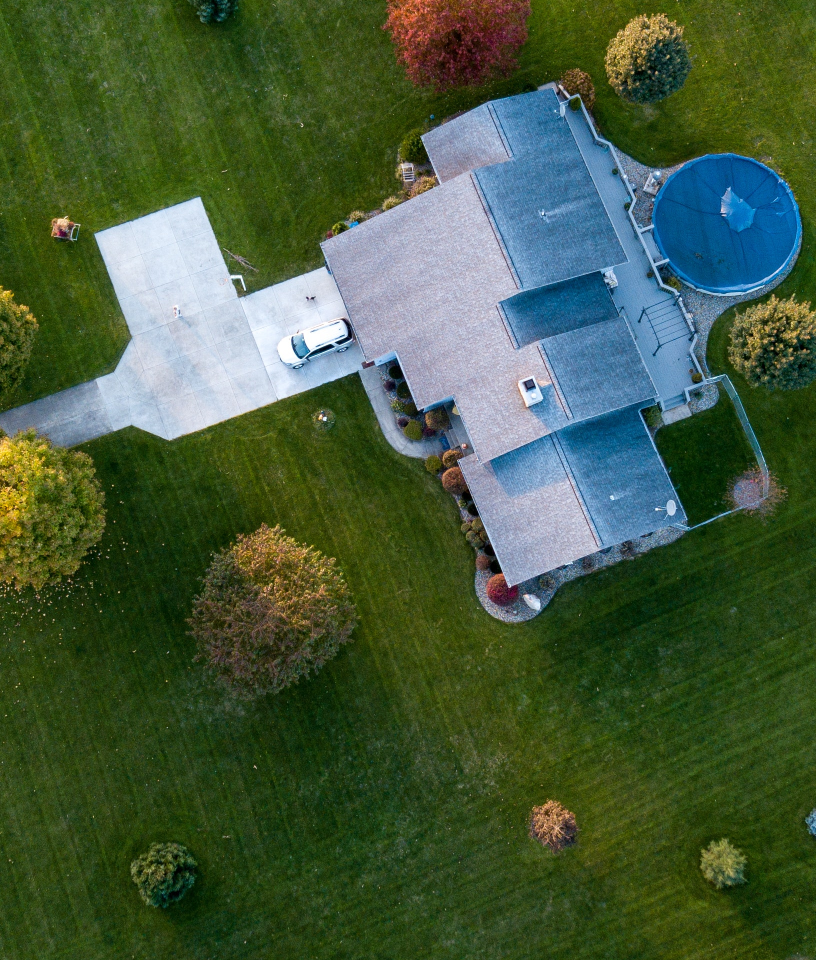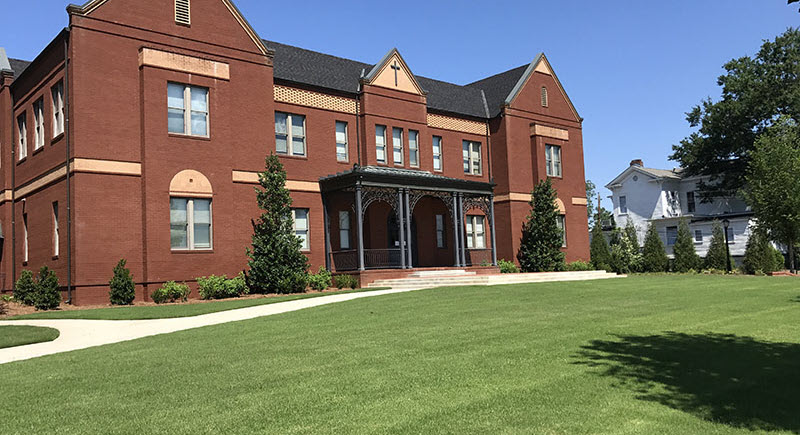Bermuda vs. St. Augustine: Which Grass Wins Texas Lawn Challenges
Choosing the best grass for Texas lawns comes down to matching turf traits with your site’s light, water, and wear. In short: Common Bermuda types excel in full sun, high-traffic landscapes; with TifTuf Bermuda excelling during drought periods. St. Augustine shines in shaded and humid areas. Both are warm-season staples across Texas, but their differences are decisive.
As heat waves, water restrictions, and population growth intensify lawn demands, the right fit saves time, water, and money. Below, Super‑Sod’s farm-level perspective and Texas know-how will guide you through a clear, side-by-side comparison so you can select confidently for your property’s conditions.
Overview of Bermuda Grass and St. Augustine Grass
- Bermuda grass: A sun-loving, fast-growing turf with fine to medium blades that forms a dense, uniform lawn, tolerates heavy use, and recovers quickly.
- St. Augustine grass: A broad-bladed, shade-tolerant turf with a dense, cushiony habit, prized for its lush, tropical look in humid, coastal areas.
Both are warm-season grasses well-suited to Texas heat. Common Bermuda’s durability and TifTuf's drought efficiency make them a common choice for active, sunny yards throughout the state, while St. Augustine’s shade tolerance and carpet-like density fit treed neighborhoods that experience minimal frosts.
With heat and drought pressure rising, aligning light conditions and water capacity with grass choice is more important than ever.
Sunlight and Shade Tolerance Comparison
-
Most Bermudas require full sun—at least 8 hours of direct light daily—and thins in shade; TifTuf Bermuda is more shade tolerant, requiring at least 5-6 hours of direct sun
-
St. Augustine tolerates partial shade and can remain healthy with roughly 3–4 hours of direct sun, especially under trees and on north exposures.
Under trees and along shaded building faces, Bermuda becomes sparse and patchy, while St. Augustine typically stays fuller and greener. For heavily shaded yards, consider shade-oriented options like Super-Sod's TifTuf Bermuda or strategic tree pruning to improve light.
|
Shade Tolerances |
Bermudagrass |
TifTuf Bermudagrass |
St. Augustinegrass |
| Minimum Hours of Direct Sunlight Needed | 8+ hours | 5-6 hours | 2-3 hours |
| Notes on Shade/Sun | Full sun required; declines in shade | More shade-tolerant than other Bermudas | Partial shade-tolerant; stays lush under trees |
Texture, Color, and Appearance Differences
-
Bermuda: Features fine to medium blades with a tight, uniform look; commonly used on sports fields and golf surrounds for a manicured, professional appearance.
-
St. Augustine: Characterized by broad, coarse blades with a bright blue-green cast; offers a soft, cushiony, tropical “carpet” aesthetic that looks lush from the curb.
|
Side-by-Side Visual Cues |
Bermudagrass |
St. Augustinegrass |
| Blade Width | Fine (TifTuf Bermuda) to Medium (Common Bermuda) | Broad-Coarse |
| Color | Medium Green | Darker Medium Green or Blue Green |
| Ambiance | Clean, Athletic | Lush, Tropical |
Growth Rate and Maintenance Needs
-
Bermuda: Exhibits aggressive spread via stolons and rhizomes; fills bare spots quickly but requires frequent mowing. Maintain at 0.75–1.5 inches; mow weekly or more during peak growth (LawnSynergy).
-
St. Augustine: Spreads by stolons (no rhizomes); has moderate growth and is more forgiving if slightly overgrown. Maintain at 3–4 inches; mow every 7–14 days in season (LawnSynergy).
|
Maintenance Checklist (Homeowner Ranges) |
Bermudagrass |
St. Augustinegrass |
| Mowing Height | 0.5-2 inches | 2 to 3.5 inches |
| Mowing Frequency | Every 5-7 days when actively growing | Every 7-10 days when actively growing |
| Spread/Regrowth | Rapid via stolons (runners) and rhizomes | Moderate via stolons only |
| Edging/Containment | Frequent edging needed | Moderate edging needed |
| Fertility | 2 to 4 lbs of nitrogen per 1000 sq. ft. during the growing season | 2 to 4 lbs of nitrogen per 1000 sq. ft. during the growing season |
| Recovery from Damage | Quick | Slower |
Drought and Heat Tolerance for Texas Lawns
-
Bermuda: Offers excellent heat and drought resilience; holds color longer and rebounds quickly after stress during hot, dry Texas summers; Super-Sod's TifTuf Bermuda offers superior drought tolerance to all other Bermudagrasses, requiring no irrigation during drought periods.
-
St. Augustine: Heat-tolerant, but less resilient during drought; requiring double the amount of water than typical Bermudas to stay healthy through extended dry spells.
|
Water/Heat Tolerances |
Bermudagrass |
TifTuf Bermudagrass |
St. Augustinegrass |
| Drought Tolerance | Medium | High | Low |
| Water/Irrigation Requirements | Medium at 1" per week | Low: Water new TifTuf, turn off irrigation once established | High at 2" per week |
| Heat Tolerance | High | High | High |
| Humidity Tolerance | High | High | High |
Drought Tolerance Comparison
While the leaf texture and color are similar, TifTuf Bermuda (on the right) clearly outshines Tifway 419 Bermuda (on the left) during drought.
The practical implications of these differences are substantial. While traditional Bermuda varieties may require frequent irrigation to prevent browning during dry spells, TifTuf maintains its appearance with minimal supplemental watering.

Foot Traffic and Wear Recovery
-
Bermuda: Demonstrates excellent traffic tolerance; recovers quickly from kids, pets, and sports activity thanks to stolons and rhizomes.
-
St. Augustine: Moderate traffic tolerance; can struggle and recover slowly in high-wear zones.
|
Wear and Recovery Snapshot |
Bermudagrass |
St. Augustinegrass |
| Traffic Tolerance | High | Low |
| Recovery Speed | Fast | Slow |
Soil Adaptability and Regional Suitability in Texas
While St. Augustine thrives in shady, humid regions of Texas, the bottom line is that TifTuf Bermudagrass is the better drought-tolerant and functional turf choice across Texas. Invest in TifTuf turf for significant practical and environmental advantages that extend far beyond water conservation. Super-Sod's TifTuf creates resilient landscapes that perform consistently even in Texas's challenging climate.
Water Conservation Benefits:
-
-
TifTuf Bermudagrass reduces irrigation needs by up to 38% compared to Tifway Bermuda
-
Supports local water conservation efforts and compliance with municipal restrictions
-
Lowers monthly utility bills through reduced water consumption
-
Additional Advantages:
-
-
Lower maintenance costs: Fewer inputs required for Bermuda for pest control
-
Sustainable curb appeal: Maintains attractive appearance during stress periods
-
Year-round resilience: Quick recovery from drought, heat, and traffic damage
-
Drought-tolerant sod options like TifTuf Bermuda not only reduce resource consumption but also support healthy landscapes that recover quickly from environmental stress. Super-Sod's vertically integrated approach ensures you receive fresh, high-quality sod directly from our farms, maximizing establishment success and long-term performance.
TifTuf Bermuda sod contributes to more sustainable landscaping practices while delivering the beautiful, functional lawns Texas homeowners desire. The initial investment in quality drought-resistant sod pays dividends through reduced maintenance demands and consistent performance year after year.
Pros and Cons of Bermuda Grass
Advantages
-
-
Excellent drought resilience and heat tolerance; Super-Sod's TifTif stands out as the superior choice for a true drought-tolerant lawn
-
Rapid recovery from damage and outstanding traffic handling
-
Versatile across Texas soils
-
Dense, uniform, professional appearance
-
Drawbacks
-
-
Limited shade tolerance; Super-Sod's TifTuf Bermuda is more shade tolerant than other types as shown in the chart above.
-
Frequent mowing/edging required
-
Can invade into beds and edges
-
Potential for thatch buildup if overfed
-
Pros and Cons of St. Augustine Grass
Advantages
-
-
High shade tolerance for treed lots
-
Dense, lush, blue-green curb appeal
-
Taller cut can reduce mowing frequency
-
Thrives in humid, coastal environments
-
Drawbacks
-
-
Slow recovery from wear and damage
-
No drought tolerance; higher water needs
-
Higher susceptibility to disease/pests
-
Less durable under heavy traffic
-
Choosing the Right Grass for Your Texas Lawn
Use this quick, step-by-step approach to match grass to your site:
-
Assess sunlight patterns: Count daily direct sunlight hours. Full sun favors Bermuda (TifTuf is a little more shade tolerant); partial shade leans St. Augustine. If shade is heavy, review alternatives like Super-Sod's Zeon Zoysia or see our guide: Is your yard too shady for grass?
-
Consider foot traffic: Active lawns (kids, pets, play) lean toward Bermuda; low-to-moderate traffic can support St. Augustine.
-
Review soil type and drainage: Bermuda is adaptable to clay or sandy soils; St. Augustine prefers improved, well-drained soils; both benefit from the addition of Soil³ compost to the soil.
-
Estimate watering capacity: Limited irrigation and drought restrictions tilt toward Bermuda; reliable irrigation supports St. Augustine weekly.
-
Factor in aesthetic goals: Choose Bermuda for a fine, manicured look; select St. Augustine for a plush, tropical vibe.
Summary: For sunny, high-use lawns, Bermuda is preferred; for shady, humid areas, choose St. Augustine.
Super‑Sod is expanding resources for Texas homeowners and pros, including local know-how and farm-direct quality. For shade-tolerant alternatives we grow and recommend, explore Zeon Zoysia and Palisades Zoysia. For context on St. Augustine availability, read: Why We Don't Recommend St. Augustine.
Frequently Asked Questions
Which grass handles Texas heat and drought better?
TifTuf Bermuda thrives in Texas heat and is the most drought-tolerant grass available; it retains color longer in the fall and greens up earlier in the spring than other Bermudas. TifTuf's strong, deep roots allow for quicker establishment. St. Augustine tolerates heat but requires more water to maintain health. For drought-tolerance, choose TifTuf Bermudagrass.
Which grass is more shade-tolerant for Texas lawns?
St. Augustine is the more shade-tolerant choice and can remain viable with 2-3 hours of direct sun, while Bermuda generally needs 8+ hours to avoid thinning. TifTuf Bermuda is the middle ground, requiring only 5-6 hours of direct sunlight.
How do Bermuda and St. Augustine compare in lawn traffic tolerance?
Bermuda handles heavy traffic and recovers quickly, making it ideal for active families, for sports fields, and for pet play areas. St. Augustine is not very tolerant of use, and may thin and recover slowly in high-wear zones.
What are the typical maintenance demands for both grasses?
Bermuda grows aggressively and often requires weekly mowing at a lower height, plus diligent edging. St. Augustine is kept taller (2 to 3.5 inches), can be mowed less frequently in summer, but may be more disease-prone in humid conditions. Both require the same amount of fertilization at 2 to 4 lbs of nitrogen per 1000 sq. ft. during the growing season.
How do soil types in Texas affect grass selection?
Bermuda adapts to a broad range of Texas soils, including clay and sandy conditions. St. Augustine prefers well-drained, fertile soils and performs best in humid/coastal regions; it struggles in poorly drained clays without soil improvement.






